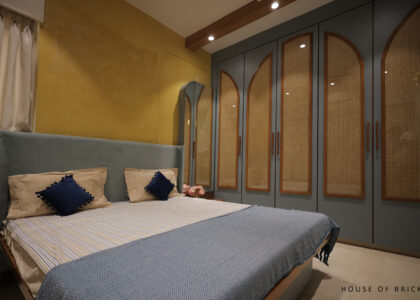Walls tell a story long before furniture or art is added. Their texture, color, and finish shape the atmosphere of every room. Among all wall treatments, lime plaster stands out as an ancient material that continues to feel fresh and relevant today. If you’re curious about how this traditional technique can transform modern spaces, this guide will walk you through its origins, benefits, and contemporary applications.
What Makes Lime Plaster a Living Tradition
For centuries, builders and artisans used lime-based finishes to coat homes, temples, and palaces. Unlike many modern coatings, lime is a natural material that hardens slowly by absorbing carbon dioxide from the air. This means walls finished with lime literally return to stone over time. The result is durability, beauty, and a subtle, hand-crafted character that synthetic products struggle to match.
A professionally handled lime finish application ensures these qualities shine through. Skilled craftsmen mix, apply, and polish the material so it becomes part of the wall itself rather than a layer sitting on top. Done well, it’s a surface that matures gracefully, acquiring a soft patina instead of cracks.
Why Homeowners Are Returning to Lime
The renewed interest in lime plaster isn’t only about nostalgia. Modern homeowners value comfort, sustainability, and health—areas where lime performs exceptionally.
- Natural Climate Control: Lime’s micro-porous structure lets walls “breathe,” allowing moisture to move in and out. This keeps interiors dry and helps prevent mold.
- Thermal Comfort: Learn more about how this material naturally keeps interiors cool. Its ability to regulate humidity and temperature means less dependence on air conditioning.
- Eco-friendly: Lime absorbs carbon dioxide as it cures, offsetting part of its own production footprint.
These qualities explain why people seeking healthy, low-maintenance homes increasingly look beyond paint or synthetic plaster.
A Palette of Styles: From Rustic Matte to Glossy Heritage
Lime plaster isn’t one look; it’s a spectrum of possibilities. You can achieve a soft, velvety surface or a high-polish shine reminiscent of marble.
The Art of Araish
One of the most prized expressions of this craft is Araish plasterwork. Originating in Rajasthan, Araish involves multiple layers of lime and marble dust, skillfully burnished to create a luminous, mirror-like finish. The result is a wall that captures and reflects light, adding depth and elegance to interiors. Perfect for feature walls or formal rooms, it turns surfaces into art pieces.
Modern Textures
For contemporary spaces, lime can be tinted in earthy or pastel shades, brushed for a soft patina, or left natural for a minimalist effect. Whether your style is sleek or traditional, there’s a lime finish to match.
Comparing Lime with Modern Alternatives
With today’s busy timelines, it’s tempting to reach for quick-drying gypsum. But when you examine the differences between lime-based plaster and gypsum mixes, the traditional option proves more resilient and eco-conscious. Gypsum is convenient and smooth, but it lacks the breathability and long-term durability of lime.
Cement plaster, another common choice, offers strength but can trap moisture and eventually crack. If you’re wondering about the best material to coat your walls, lime stands out for its balance of natural performance and beauty.
Creating Luxury Interiors with Lime
Luxury isn’t only about expensive materials; it’s about thoughtful detail. Lime plaster offers a depth and tactile richness that elevate interiors well beyond a painted wall.
Choosing the ideal wall finish for an elegant home requires careful planning. Light direction, furniture style, and architectural lines all influence which texture or sheen will highlight your space best. A matte lime wall, for example, pairs beautifully with natural wood and linen, while a polished Araish surface complements marble and brass.
Where Craftsmanship Meets Design
Even the finest material needs expert guidance. Partnering with an experienced architectural design specialist ensures that the lime finish fits the overall design story of your house. From helping you choose the right shade to coordinating with masons and painters, design consultants bridge the gap between old-world technique and contemporary architecture.
Step-by-Step: How a Lime Finish Comes to Life
- Base preparation – The wall surface is cleaned and roughened to help adhesion.
- Mixing the plaster – Lime putty, fine sand, and natural pigments are blended.
- Layering – Several thin coats are applied, each carefully compressed to prevent cracks.
- Burnishing or texturing – Depending on the chosen style, artisans polish for a glossy effect or create soft textures for a rustic look.
Because the process is gradual, each layer bonds deeply, creating a surface that becomes part of the wall itself.
Caring for Lime-Finished Walls
One reason lime walls remain popular in heritage buildings is their low maintenance. Dust can be gently wiped off, and small marks often fade as the surface naturally re-carbonates. If needed, a fresh thin wash revives the color without heavy repainting.
Sustainability and Well-Being
Unlike many synthetic coatings, lime contains no VOCs (volatile organic compounds). It improves indoor air quality and even acts as a mild natural antiseptic. Its ability to absorb and release moisture creates a healthier indoor climate—cool in summer, cozy in winter—while reducing the need for mechanical heating or cooling.
Where Lime Plaster Works Best
- Living and dining rooms where you want warmth and elegance.
- Bedrooms for a calm, breathable environment.
- Feature walls and niches that benefit from texture or shine.
- Exterior facades in dry climates, where lime’s flexibility resists hairline cracks.
With creative planning, even kitchens and bathrooms can benefit when combined with appropriate sealants.
Blending Tradition and Innovation
The renewed popularity of lime plaster isn’t just about preserving heritage. Architects and homeowners are reinterpreting it for modern lifestyles—mixing subtle pigments, combining matte and polished areas, and using it alongside contemporary materials like steel and glass. The result is a design language that feels fresh while rooted in craft.
Conclusion: A Living, Breathing Wall Finish
Lime plaster is far more than a decorative coating. It’s a living surface that matures with your home, enhancing comfort and beauty year after year. Whether you’re drawn to the glowing elegance of Araish or the quiet strength of a matte finish, lime offers possibilities no synthetic product can match.
House of Lime brings centuries-old artistry into today’s interiors. By choosing this natural finish, you’re not only embracing a rich design tradition—you’re creating a healthier, cooler, and more sustainable home that will remain captivating for generations.







